Sea slugs in sunny Singapore
 July 13, 2016
July 13, 2016

Our band of intrepid local divers capitalised on the abundant sunshine and headed out to Hantu’s reefs this weekend. The photographs from this blog post were taken by Toh Chay Hoon, Singapore’s informal macro specialist, well known for her tendency to spot the small and miss the big! Her special skill brings us unique insight into the lives of tiny creatures on the reef that are often missed. Through her eyes, we are able to perceive the reef at a whole new level. This colourful sea hare, Philinopsis falciphallus, was a new sighting for Chay Hoon. Sea hares are Opisthobranchs that are characterised by a vestigial shell and two pairs of tentacles, which tells us its ancestors looked much like our common image of a snail.

Like P. falciphallus above, Cuthona sibogae are opisthobranchs. But as you can see, they look very different. Aeolids are a suborder or nudibranchs and have long, narrow bodies with numerous finger-like projections, called cerata. They also have a pair of oral tentacles, parapodial tentacles, and rhinophores (casually referred to as “feelers”) on their head. This one is munching on the polyps of a hydroid. Divers may not like hydroids much because we get stung by them, but it’s a great food source for these sea slugs!
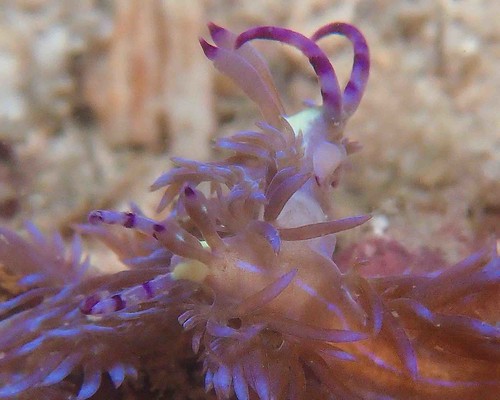
If you can spot the “feelers” in the above photo, you will notice that there are two individuals in the picture. Like all opisthobranchs, Pteraeolidia semperi, also known as Blue dragons, are simultaneous hermaphrodites. This means they have both female and male sex organs. The genitalia are highly specialised to prevent self fertilisation. Can you think about why it would want to avoid self fertilisation? When mating, individuals function as male and female and copulation can last for several hours, or be brief [1].
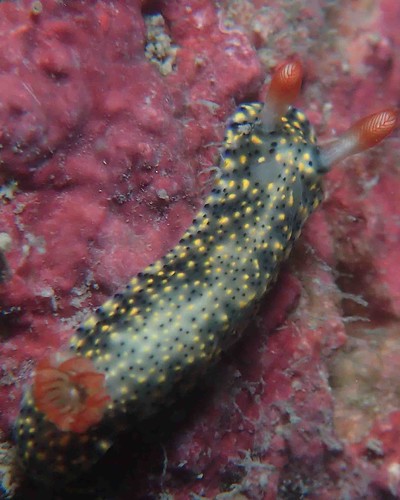

Hypselodoris infucata (left), is a carnivorous nudibranch found in the intertidal and shallow subtidal habitats on tropical reefs. Also known as the Painted nudibranch, it is carnivorous, which means it eats other nudibranchs. The more nudibranchs we have at Hantu, the better! Doto sp. (right) is a small nudibranch that can be found on the hydroids around our reefs.
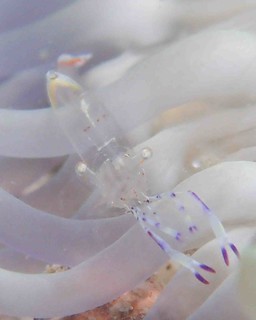

Sea slugs are pretty and flamboyant, but there are many creatures that prefer to remain hidden, such as this Cleaner shrimp (left) that is almost completely transparent, and Allied cowrie (right) that looks like a little blimp on its host gorgonian coral.
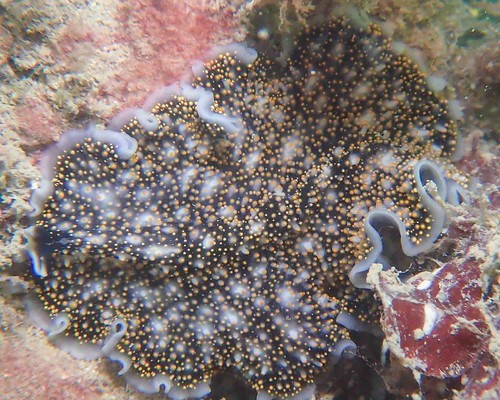
This Marine flatworm looks just like a piece of encrusting coral! It’d be hard to spot it if you didn’t know what you were looking for!
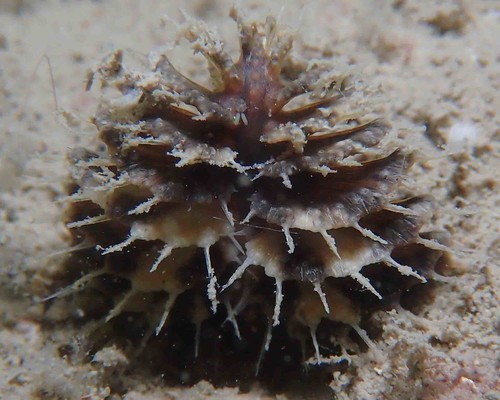
A tube worm? It’s a Sea pen! Sea pens, like corals, comprise a colony of animals. There are often many small commensal animals that live within a sea pen, the same way you find small animals living within coral. If you are curious about sea pens, Ria Tan’s website has a great introduction!

As some of you might know, our corals have been undergoing a tremendous amount of stress recently. Many of our corals are bleaching and have remained bleached for over a month. We don’t know how long they can hang on before they die. There are many causes of coral bleaching, but high sea surface temperatures are believed to be the primary stressor. Many of the plate corals at Hantu are badly affected.

Boulder coral Euphyllia spp. was also found bleaching. I had confused this coral for an anemone! Thanks to Ria Tan for helping with the identification!

Some coral colonies are still hanging in there, and while they are in the process of bleaching they haven’t completely gone white. Hopefully this gives them a better chance of survival if things can turn around soon.

Find out more about how and why corals bleach here.

Our reefs need us to look out for them. Let us know if you spot anything unusual or interesting on the island or its reefs. Join our dives to learn more about our reefs and let our experienced dive guides share the wonders of Pulau Hantu with you!
 Posted in
Posted in 



 content rss
content rss
COMMENTS